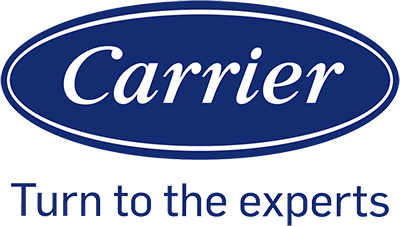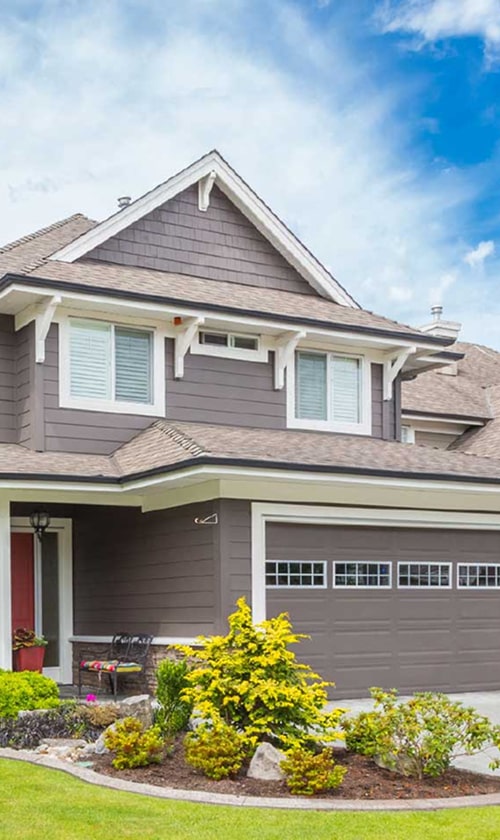Clean indoor air does not have to come with a high price tag. Many practical options exist that improve air quality without straining a budget. We can install cost-effective systems that balance performance, efficiency, and long-term value.

When we look at the basics of air quality, the right system depends on the space, the type of pollutants, and the level of maintenance we can commit to. Affordable filtration units and air cleaners can handle common needs, while supplemental technologies offer added support when conditions demand more.
By focusing on smart installation practices and simple upkeep, we can extend system life and maintain healthier air at a lower cost. This approach helps us avoid overspending while still protecting comfort and health indoors.
Fundamental Considerations for Indoor Air Quality System Installation
We need to look closely at the specific air quality issues in a space, the kinds of pollutants present, and how installation costs align with the type of building. These factors guide us in choosing systems that balance performance, efficiency, and long-term value.
Assessing Indoor Air Quality Needs
We start by identifying the main sources of poor indoor air quality. Common factors include outdoor pollution entering through ventilation, indoor activities such as cooking or cleaning, and building materials that release volatile compounds. Each space has unique conditions that shape the type of system required.
It helps to measure baseline air quality before making decisions. Tools such as indoor air quality monitors can track levels of carbon dioxide, humidity, and particulates. This data gives us a clear picture of what needs improvement.
We also consider the size of the building, the number of occupants, and the use of each area. For example, classrooms or offices with high occupancy may need systems that focus on ventilation and filtration, while storage areas may only require basic controls.
By matching system capacity to actual needs, we avoid overspending on equipment that is too large or underperforming units that fail to address the problem.
Understanding Air Pollutants and Particulates
Not all pollutants affect air quality in the same way. We often deal with particulates like dust, pollen, and smoke, along with gases such as carbon monoxide or volatile organic compounds (VOCs). Each requires a different control method.
Fine particulates (PM2.5) are especially important to monitor because they can reach deep into the lungs. Larger particles like dust and pollen are easier to filter but still affect comfort and cleanliness.
We also pay attention to moisture levels. High humidity can lead to mold growth, while low humidity can cause dry air and irritation. Both conditions reduce indoor air quality if not managed properly.
A practical approach is to use multi-stage filtration. For example:
- Pre-filters for large particles
- HEPA filters for fine particulates
- Activated carbon filters for gases and odors
This layered method ensures broader protection against different pollutants.
Evaluating Cost-Effectiveness for Different Building Types
The cost of installing an indoor air quality system depends on the building’s size, layout, and purpose. Residential units often need smaller, localized systems, while commercial spaces benefit from centralized solutions.
We consider both initial installation costs and ongoing operating expenses. A system that uses energy-efficient fans and filters may cost more upfront but reduce utility bills over time.
Different building types also have different return on investment. For example:
| Building Type | Typical Needs | Cost Focus |
|---|---|---|
| Residential | Comfort, allergen control | Lower upfront cost |
| Office | Occupant health, productivity | Balance of cost and quality |
| Industrial | Heavy pollutant removal | Long-term durability |
By aligning system design with building function, we ensure cost-effectiveness without compromising air quality. This approach helps us prioritize both health and budget.
Affordable Filtration and Air Cleaner Solutions

We can improve indoor air quality without spending large amounts of money by choosing effective filtration and cleaner options. Some methods involve simple do-it-yourself projects, while others use upgrades to existing HVAC systems or portable devices.
DIY Air Cleaner Systems (Corsi-Rosenthal Box)
A Corsi-Rosenthal Box is a low-cost air cleaner we can build using common materials. It combines a box fan, four or five high-efficiency air filters, and duct tape. The fan pulls air through the filters, which trap particles such as dust, pollen, and smoke.
This setup is simple and can be built in less than an hour. The main cost comes from the filters, which usually need replacement every few months depending on use.
We should place the box in a central location for best results. While it is not as compact as a portable HEPA unit, it provides strong airflow and filtration for a fraction of the price.
High-Efficiency Air Filters and MERV Ratings
When we replace air filters in our HVAC system, the MERV rating tells us how well the filter captures particles. MERV 8–11 filters handle dust and pollen, while MERV 13–16 filters capture smaller particles, including smoke and some bacteria.
Choosing the right filter depends on our system’s capacity. Higher MERV filters restrict airflow more, so we need to check if our HVAC fan can handle the resistance. If not, the system may run less efficiently or fail to circulate enough air.
A cost-effective approach is upgrading from a standard fiberglass filter to a pleated MERV 11 or MERV 13 filter. This improves filtration without major system changes, and the filters are widely available at hardware stores.
Portable HEPA Air Cleaners
Portable HEPA air cleaners use dense filters that trap very small particles. They are useful in bedrooms, offices, or other rooms where we spend the most time. These units do not need installation and can be moved as needed.
When choosing a unit, we should check the Clean Air Delivery Rate (CADR). A higher CADR means the cleaner can handle larger rooms. Units with adjustable fan speeds let us balance noise and airflow.
Operating costs include filter replacements, which usually occur every 6–12 months. While portable HEPA units cost more than DIY options, they offer convenience and tested performance.
Central HVAC Filtration Upgrades
If our home already has central HVAC, upgrading the filtration system can improve air quality across all rooms. This may involve installing a higher-rated filter, adding a filter housing that accepts thicker filters, or even using a dedicated whole-house air cleaner.
Thicker filters, such as 4-inch or 5-inch media filters, last longer and hold more particles than standard 1-inch filters. They also reduce the need for frequent changes.
Some HVAC systems can also integrate electronic air cleaners or UV lights, but these add cost and maintenance. For most households, upgrading to a higher-efficiency filter and ensuring proper system airflow is the most practical and affordable step.
Supplemental and Alternative Air Quality Technologies
We can improve indoor air quality with systems that go beyond standard filters. These options use light, plasma, ions, or ozone to reduce airborne particles, microbes, and gases, though each has different costs, benefits, and safety concerns.
Ultraviolet Germicidal Irradiation Systems
Ultraviolet germicidal irradiation (UVGI) uses short-wave UV-C light to damage the DNA or RNA of microorganisms. This makes viruses, bacteria, and mold unable to reproduce.
We often see UVGI lamps placed inside HVAC ducts or near cooling coils. This placement helps reduce biofilm buildup and keeps the system cleaner. It can also lower the spread of airborne pathogens in shared spaces.
Key advantages:
- Works continuously with minimal maintenance
- Targets microorganisms directly
- Can extend HVAC system efficiency by keeping coils clean
Limitations:
- Does not remove dust, gases, or allergens
- Requires proper installation to avoid human exposure
- Lamp intensity decreases over time and needs replacement
UVGI is most effective as a supplement to filtration, not a replacement.
Cold Plasma Generation Devices
Cold plasma devices create reactive oxygen species by applying an electrical charge to air molecules. These reactive particles can break down certain volatile organic compounds (VOCs) and reduce some microbes in the air.
We can install cold plasma units inside HVAC ducts or as stand-alone devices. They are often marketed as low-maintenance solutions that run continuously with the system fan.
Benefits:
- Can reduce odors and certain VOCs
- May help lower some biological contaminants
- Generally low power use
Concerns:
- Effectiveness can vary depending on room size and pollutant type
- Some devices may produce small amounts of ozone
- Limited long-term independent testing
Cold plasma works best when paired with filtration, especially for particles and allergens.
Ionization and Photocatalytic Systems
Ionization systems release charged ions into the air. These ions cause particles to clump together, making them easier for filters to capture. Some systems also claim to reduce microbes by damaging their cell structures.
Photocatalytic oxidation (PCO) uses UV light with a catalyst, often titanium dioxide, to break down VOCs and odors. This reaction produces reactive radicals that can degrade certain pollutants.
Strengths:
- Can help reduce fine particles when combined with filters
- May lower some chemical pollutants and odors
- Works continuously with HVAC operation
Drawbacks:
- Some systems create trace ozone or byproducts
- Performance depends on airflow and pollutant type
- Maintenance of catalysts or bulbs is required
These systems can offer added benefits, but we must monitor for byproduct formation.
Ozone-Generating Technologies: Benefits and Risks
Ozone generators intentionally produce ozone gas, which reacts with odors, mold, and some pollutants. Some units are marketed as air purifiers, but their safety is debated.
Potential benefits:
- Can reduce strong odors in unoccupied spaces
- May help in certain remediation projects, such as smoke damage
Risks and concerns:
- Ozone is a lung irritant at levels above 0.05 ppm
- Continuous exposure can worsen asthma and other respiratory issues
- Ozone can react with indoor materials, producing harmful byproducts
We should not rely on ozone generators for occupied spaces. If used, they must be applied in controlled, unoccupied conditions with proper ventilation afterward.
Ozone technology carries more risks than most alternatives and requires careful consideration before use.
Installation Best Practices and Ongoing Maintenance

We keep indoor air systems effective by placing them correctly, keeping filters in good condition, and making sure parts work together without wasting energy. Each step helps us maintain cleaner air and avoid costly repairs.
Proper Sizing and Placement of Air Quality Systems
We need to size systems based on the square footage and layout of the space. An oversized system may cycle too quickly, while an undersized one struggles to keep up. Both situations reduce efficiency and increase energy costs.
Placement also matters. Units should be installed where airflow is not blocked by walls, furniture, or equipment. For HVAC-based systems, ducts must be properly sealed to prevent leaks that lower performance.
We should also consider ceiling height and room use. For example, a classroom with high occupancy needs stronger airflow than a small office. Careful planning ensures the system covers the entire space evenly.
Routine Maintenance of Filters and Devices
Air filters collect dust, pollen, and other particles. If we do not replace or clean them on schedule, airflow drops and strain on the HVAC system increases. Most filters need replacement every 1–3 months, though higher-grade filters may last longer.
We should keep a maintenance calendar. A simple table helps track tasks:
| Task | Frequency | Notes |
|---|---|---|
| Replace air filters | Every 1–3 months | Check more often in dusty areas |
| Inspect ducts | Every 6–12 months | Look for leaks or blockages |
| Clean air purifiers | Monthly | Follow manufacturer instructions |
Ignoring these steps can cause poor air quality and higher energy bills. Regular upkeep keeps systems reliable and cost-effective.
Ensuring System Compatibility and Efficiency
We must confirm that all components work well together. For example, not all air filters fit every HVAC unit, and using the wrong type can lower airflow. Compatibility prevents damage and ensures the system runs as designed.
Energy efficiency also depends on correct pairing. A high-efficiency filter should match an HVAC system that can handle the added resistance. Otherwise, the blower motor may wear out early.
We can improve efficiency by sealing ductwork, using programmable thermostats, and checking for proper airflow balance. These steps reduce wasted energy while keeping indoor air cleaner and healthier.




